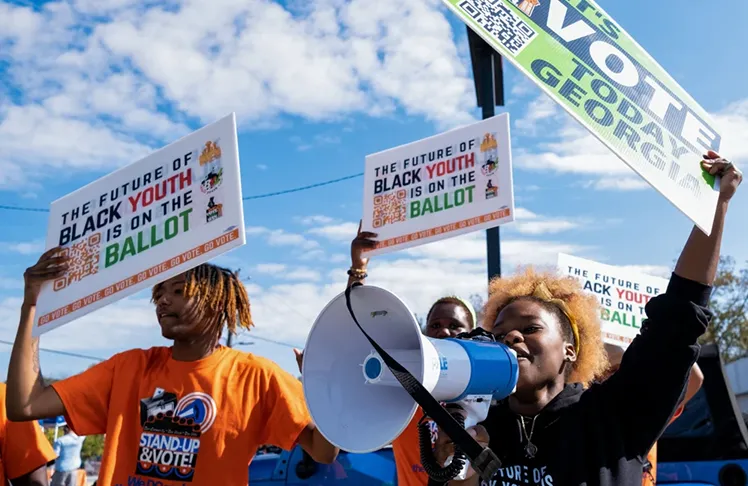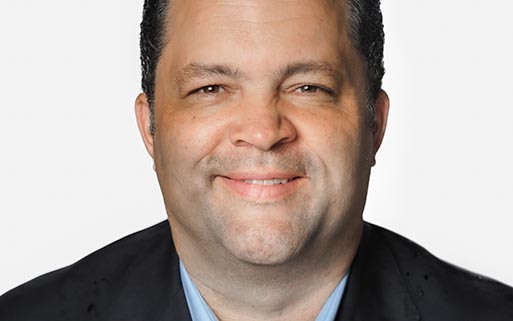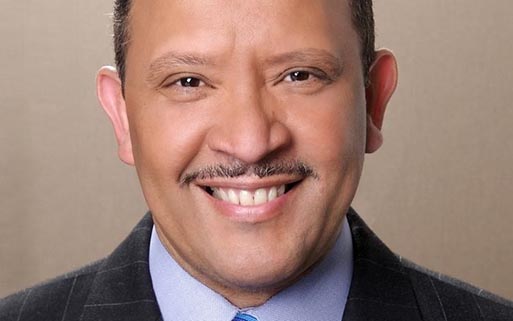

This article is one of a series of articles produced by Word in Black through support provided by the Chan Zuckerberg Initiative. Word In Black is a collaborative of 10 Black-owned media outlets across the country.
As election day draws near, ballot measures across the country hold unique implications for the future of K-12 education. More importantly, each initiative could meaningfully reshape educational resources, school environments, and overall support for Black students. Understanding these measures and how they could impact their educational equity is crucial.
Here’s an overview:
Harris vs. Trump: Presidential Election
Vice President Kamala Harris and former President Donald Trump have strikingly different visions for K-12 education. Each poses different outcomes for Black students.
Harris supports strengthening public education by increasing funding, raising teacher pay, and investing in early childhood education, aiming to make quality education accessible to all, including Black students. She advocates for school safety measures that would address disproportionate impacts on Black students — including gun violence, mental health, and the school-to-prison pipeline.
Trump believes in school choice, proposing that public funds be used to allow students to attend private or charter schools, though critics argue that diverting badly needed resources can undermine public schools serving Black communities. He wants to reduce federal involvement in education, including closing the Department of Education, a radical policy that would eliminate civil rights enforcement in K-12 public schools.
Trump also backs parental rights with a focus on curriculum transparency and stricter discipline policies. That could affect how Black history and racial issues are taught and increase school disciplinary policies that unequally harm Black students.
Governors
Eleven states—Delaware, Indiana, Missouri, Montana, New Hampshire, North Carolina, North Dakota, Utah, Vermont, Washington, and West Virginia—will elect governors, an office that typically has a significant influence on K-12 education in their states. The candidates’ backgrounds include former teachers, school board members, and a former state superintendent.
Governors can implement or veto laws that affect school funding, teacher salaries, and whether school choice programs take effect. These decisions — such as changes in funding and resources — can either alleviate or exacerbate educational disparities. Governors in Delaware, Indiana, New Hampshire, and Vermont all have the authority to appoint state superintendents, who further shape educational priorities and policies.
State Boards of Election
Alabama, Utah, Nebraska, Colorado, Michigan, and Kansas voters will cast ballots in races for 27 state board of education seats. These boards oversee specific duties in public schools, such as aligning graduation requirements with workforce readiness standards, but all have the power to appoint their state’s superintendent. These boards can also push policies that profoundly affect Black students, including setting budgets, curriculum standards, and disciplinary policies.
State Superintendents
Voters in Montana, North Carolina, North Dakota, and Washington state will elect state superintendents, the top education executives responsible for leading state education departments. The priorities of elected superintendents will influence factors such as funding equity, curriculum inclusivity, and support services, all of which are critical to the academic success and well-being of Black students.
School Choice
Separate ballot initiatives in Colorado, Kentucky and Nebraska center around using public funds for private schools to help pay private-school tuition for eligible households, — a move critics say will divert tax revenue from public schools that sorely need it. Multiple studies show the move has a disparate impact on underfunded public schools in Black communities.
- In Colorado, Amendment 80 proposes that each K-12 student has the right to school choice, including options like private schools and homeschooling. Meanwhile, Kentucky Amendment 2 asks voters to amend the state’s constitution so that “the General Assembly may provide financial support for the education of students outside the system of common schools,” including private schools. And Nebraska Referendum 435 would repeal a law providing around $10 million in public funds to help parents offset the cost of private schools.
Standardized Testing
- Massachusetts Question 2: Voters are asked if the state should eliminate the requirement for students to pass a standardized exam to graduate high school. Currently, students must earn a passing score on the 10th grade MCAS tests in English/language arts and math to receive their diploma. This change could significantly reduce a barrier for Black students, who often face disparities in standardized testing outcomes.
School Board Elections
- Florida Amendment 1: The constitutional amendment would require Florida school board candidates to list their political party affiliation starting in 2026. Depending on which party gains control, this shift could either advance or hinder initiatives to support Black students, such as curriculum inclusivity, resource allocation, and disciplinary policies.
School Funding
Five states—California, Colorado, Missouri, New Mexico, and Utah—have ballot measures to raise or increase school revenue. For Black students, more money for public schools can help with a range of issues: reducing class sizes, upgrading facilities, expanding access to early childhood education, providing mental health and essential literacy support, and closing the Black-White achievement gaps.
In New Mexico, increasing public funding for schools could boost the state’s 2.7% Black student population by providing access to diverse learning materials, technology, and extracurricular programs. But in Utah, a ballot amendment to steer funding away from children with disabilities could result in larger class sizes, fewer educational programs, and diminished support services, a frequent problem for Black students.
- California, Proposition 2 would approve $10 billion in bonds to fund construction and upgrades to public education facilities.
- Colorado, Proposition KK would impose a 6.5 percent tax on gun and ammunition sales to support education programs and mental and behavioral health programs for children and veterans.
- Missouri, Amendment 5: The measure would approve a gambling boat license to operate on a portion of the Osage River in Missouri and direct the state revenue from the permit to fund early childhood literacy programs in elementary schools.
- New Mexico, Bond Question 3: Voters will decide whether to authorize up to $19.3 million to fund public, tribal, public school, and academic libraries.
- Utah, Amendment A: Voters will decide whether to change the state’s constitution to allow income tax revenue to be used for “all state needs” rather than reserving it for supporting children with disabilities and public K-12 and higher education, as the constitution currently authorizes. Utah Amendment B: Aims to increase the annual distribution limit from the State School Fund for public education from 4% to 5%. This measure could provide additional support and resources to schools in predominantly Black communities.















